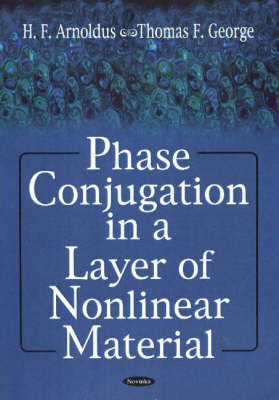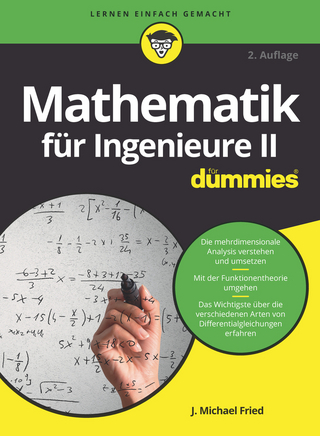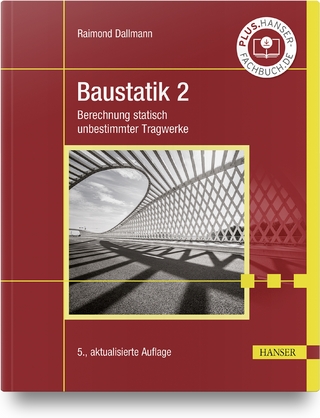
Phase Conjugation in a Layer of Nonlinear Material
Seiten
2005
Nova Science Publishers Inc (Verlag)
978-1-59454-557-3 (ISBN)
Nova Science Publishers Inc (Verlag)
978-1-59454-557-3 (ISBN)
Optical phase conjugation, or time reversal, of an optical wave front is an important technique to correct distortions in electromagnetic waves, which are built up during propagation through a medium. Here, the authors have studied theoretically optical phase conjugation through four-wave mixing in a slab of non-linear material.
Optical phase conjugation, or time reversal, of an optical wave front is an important technique to correct distortions in electromagnetic waves which are built up during propagation through a medium. The authors have studied theoretically optical phase conjugation through four-wave mixing in a slab of non-linear material. When two strong counter-propagating laser beams irradiate a non-linear crystal, the third-order susceptibility is activated, and can couple to an external weak probe field. A four-wave mixing process then generates a phase-conjugated or time-reversed replica of this incident probe field. They investigated the mechanism of the production of phase-conjugated radiation in such a configuration by solving the non-linear Maxwell equations for the electric field. The electric field in the material satisfies a set of two coupled wave equations, which couple positive and negative frequency components of the electric field. It is shown that the polarisation of the pumps and the tensorial nature of the interaction can be accounted for by a simple polarisation operator in the wave equations. Maxwell's equations for the field in the layer admit plane-wave solutions, although the dispersion relations are very different from the usual linear relation between the frequency and the wave number. The coupling between the two waves exhibits a strong resonance near the frequency of the pump beams. These plane-wave modes can be matched across the boundaries of the layer to the probe field. The response of the material can then be expressed in terms of Fresnel reflection and transmission coefficients for both s- and p-polarisation. We have derived simple matrix equations for the set of Fresnel coefficients, which can be solved numerically, and the have also obtained closed-form analytical solutions for the various Fresnel coefficients. It is indicated that our solutions reduce to earlier results in the appropriate limits.
Optical phase conjugation, or time reversal, of an optical wave front is an important technique to correct distortions in electromagnetic waves which are built up during propagation through a medium. The authors have studied theoretically optical phase conjugation through four-wave mixing in a slab of non-linear material. When two strong counter-propagating laser beams irradiate a non-linear crystal, the third-order susceptibility is activated, and can couple to an external weak probe field. A four-wave mixing process then generates a phase-conjugated or time-reversed replica of this incident probe field. They investigated the mechanism of the production of phase-conjugated radiation in such a configuration by solving the non-linear Maxwell equations for the electric field. The electric field in the material satisfies a set of two coupled wave equations, which couple positive and negative frequency components of the electric field. It is shown that the polarisation of the pumps and the tensorial nature of the interaction can be accounted for by a simple polarisation operator in the wave equations. Maxwell's equations for the field in the layer admit plane-wave solutions, although the dispersion relations are very different from the usual linear relation between the frequency and the wave number. The coupling between the two waves exhibits a strong resonance near the frequency of the pump beams. These plane-wave modes can be matched across the boundaries of the layer to the probe field. The response of the material can then be expressed in terms of Fresnel reflection and transmission coefficients for both s- and p-polarisation. We have derived simple matrix equations for the set of Fresnel coefficients, which can be solved numerically, and the have also obtained closed-form analytical solutions for the various Fresnel coefficients. It is indicated that our solutions reduce to earlier results in the appropriate limits.
Introduction; Description of the Phase Conjugator; Maxwells Equations; Polarisation; Weak Incident Field; Separation of Equations; Approximations on; Pump Fields; Polarisation Operator; Positive and Negative Frequency Parts; Coupled Wave Equations; Plane Waves; Set of Equations for the Wave Vector; Transverse Solution; Non-Transverse Solution; s-Waves; p-Waves; Excitation of Plane-Wave Modes; Fields; Fresnel Coefficients; Third Boundary Condition; Analytical Solution; Off Resonance; Travelling Waves on Resonance; Resonance in a Transparent Medium; Frequency Dependence in a Transparent Medium; Specular Wave; Evanescent Waves; Bichromatic Solution of Plane Waves; Helicity; Summary and Conclusions; Index.
| Erscheint lt. Verlag | 19.9.2005 |
|---|---|
| Zusatzinfo | Illustrations, unspecified |
| Verlagsort | New York |
| Sprache | englisch |
| Maße | 260 x 180 mm |
| Gewicht | 299 g |
| Themenwelt | Mathematik / Informatik ► Mathematik ► Angewandte Mathematik |
| Naturwissenschaften ► Physik / Astronomie ► Optik | |
| ISBN-10 | 1-59454-557-X / 159454557X |
| ISBN-13 | 978-1-59454-557-3 / 9781594545573 |
| Zustand | Neuware |
| Haben Sie eine Frage zum Produkt? |
Mehr entdecken
aus dem Bereich
aus dem Bereich
Berechnung statisch unbestimmter Tragwerke
Buch | Hardcover (2022)
Hanser (Verlag)
29,99 €
Buch | Hardcover (2024)
Hanser (Verlag)
39,99 €


